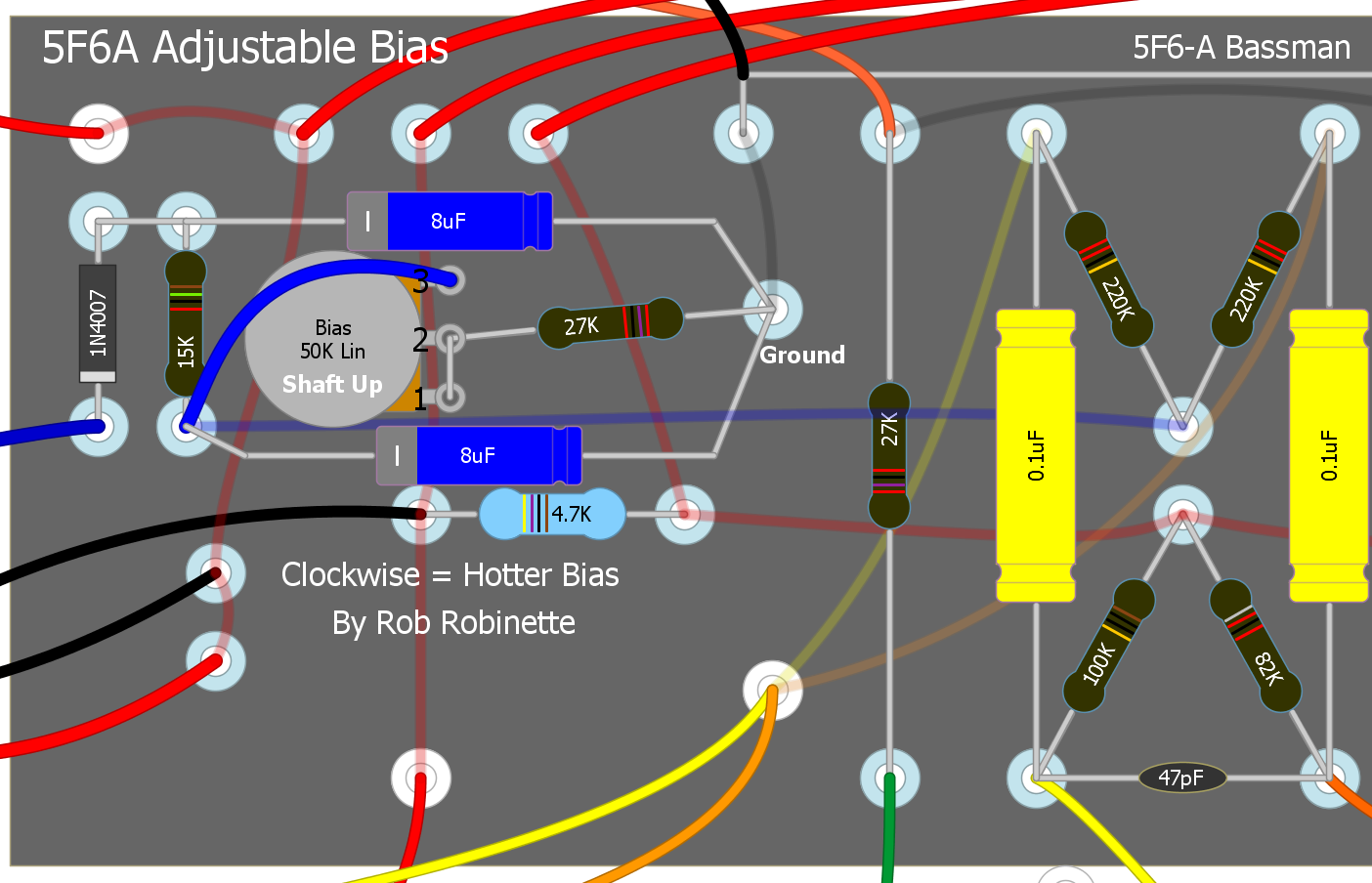changing the 56k in the bias circuit to a 47k and adding a 22k resistor between the 47k and ground?
I'm using exactly this schematic with KT66's, a slightly more filtering and wanting to add the bias pot. It's almost built, haven't finished the last couple details.
http://www.classictubeamps.com/schem...66%20JTM45.pdf
I'm using exactly this schematic with KT66's, a slightly more filtering and wanting to add the bias pot. It's almost built, haven't finished the last couple details.
http://www.classictubeamps.com/schem...66%20JTM45.pdf


Comment